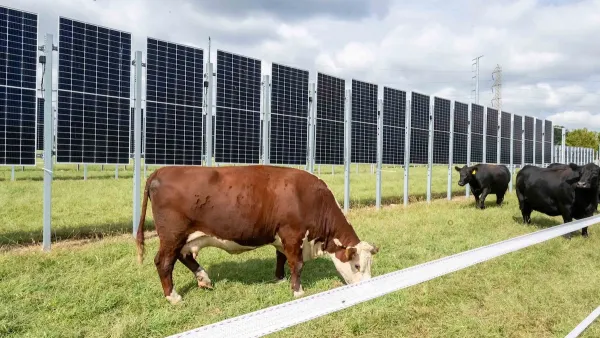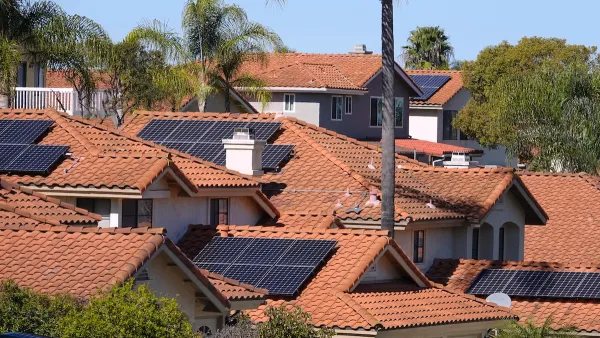Despite concerns that solar projects could lower property values, new research finds they actually rose slightly in areas near utility-scale solar installations.

Large solar farms do not have a negative impact on nearby property values in the Midwest, reveals a study from a Loyola University researcher. As Kari Lydersen notes in an article for Canary Media, they may even have a slight positive effect.
The study found that property values near 70 large-scale solar farms in the Midwest actually increased by 0.5 percent to 2 percent. The researcher, Gilbert Michaud, noted that the installations can also drive local economic development through new jobs and tax contributions. “The most beneficial impact on property values was from solar farms between 5 and 20 MW in size, perhaps in part because these can be hidden by vegetative buffers.”
The study was a response to concerns by many residents in rural areas that solar projects will reduce property values and have a negative impact on local communities. Michaud hopes local officials will take note, saying, “Many of these folks are now making decisions about whether to host a large-scale solar project in their community, and the potential impacts to property values is often something that comes up in local debates and at local hearings. Data can help tell a story and move the debate beyond anecdotal or subjective arguments.”
FULL STORY: Solar farms don’t hurt nearby property values, new research finds

National Parks Layoffs Will Cause Communities to Lose Billions
Thousands of essential park workers were laid off this week, just before the busy spring break season.

Retro-silient?: America’s First “Eco-burb,” The Woodlands Turns 50
A master-planned community north of Houston offers lessons on green infrastructure and resilient design, but falls short of its founder’s lofty affordability and walkability goals.

Delivering for America Plan Will Downgrade Mail Service in at Least 49.5 Percent of Zip Codes
Republican and Democrat lawmakers criticize the plan for its disproportionate negative impact on rural communities.

Test News Post 1
This is a summary

Test News Headline 46
Test for the image on the front page.

Balancing Bombs and Butterflies: How the National Guard Protects a Rare Species
The National Guard at Fort Indiantown Gap uses GIS technology and land management strategies to balance military training with conservation efforts, ensuring the survival of the rare eastern regal fritillary butterfly.
Urban Design for Planners 1: Software Tools
This six-course series explores essential urban design concepts using open source software and equips planners with the tools they need to participate fully in the urban design process.
Planning for Universal Design
Learn the tools for implementing Universal Design in planning regulations.
EMC Planning Group, Inc.
Planetizen
Planetizen
Mpact (formerly Rail~Volution)
Great Falls Development Authority, Inc.
HUDs Office of Policy Development and Research
NYU Wagner Graduate School of Public Service





























